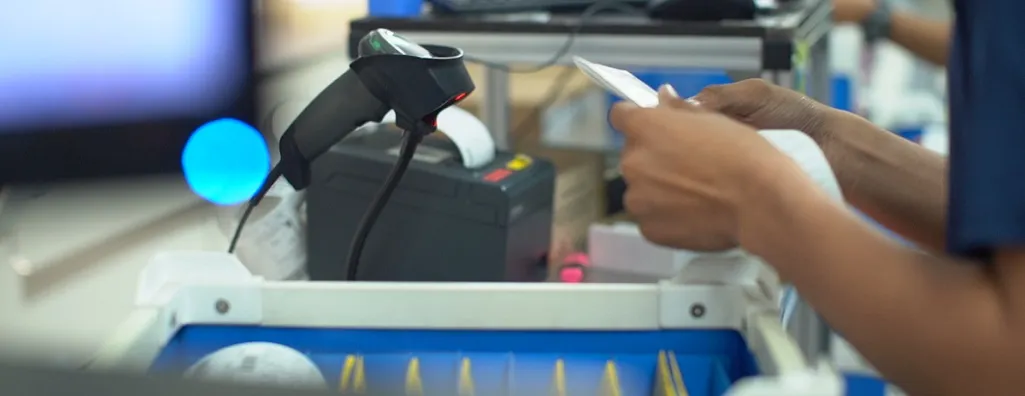After years spent collaborating closely with optical labs around the globe, I’ve seen firsthand that productivity rarely falters due to equipment alone. Instead, it’s often caused by gaps in information, seemingly minor delays that quietly escalate into costly disruptions. In many cases, these issues can be traced back to the absence of robust laboratory job tracking software that enables real-time visibility and accountability across the production floor.
Every lab manager knows the stress of trays stalled unnoticed at a coating station, jobs awaiting lenses that never appear, or remakes discovered only when it’s too late. At first glance, these issues are part of the day-to-day reality of running a busy lab. However, more often than not, they’re symptomatic of a fundamental problem: a lack of real-time visibility into production processes and the absence of real-time lab updates to alert teams before issues escalate.
In my role, I’ve frequently encountered labs that still depend on manual tracking methods, spreadsheets, or outdated software systems. Without modern laboratory job tracking software, such practices aren’t merely inconvenient; they directly undermine operational efficiency, customer satisfaction and profitability.
In this blog, I’ll explore why real-time job tracking matters, how it effectively integrates into modern Lab Management Software (LMS), and what steps optical lab managers can take to eliminate blind spots and streamline operations.
The True Cost of Limited Visibility
The optical lab industry is uniquely demanding, characterized by tight turnaround times, customized products and high expectations for precision. As a result, even minor delays or oversights can significantly impact your bottom line and your customers’ experience.
Consider a situation that every lab manager can relate to: a single missing frame or delayed lens doesn’t just impact one order. It can cascade through multiple jobs. Without immediate detection, a seemingly minor issue can cause significant disruptions, from missed deadlines and rushed remakes to dissatisfied customers and even lost business.
Picture this: a routine morning calibration on one generator is skipped to “save time.” As the day progresses, multiple jobs begin to pile up awaiting breakage analysis. While they sit, additional jobs surface, leading to inevitable power and thickness issues. By the time the backlog is finally addressed later in the day, the operational impact has already rippled across departments.
Now, isolating every job that ran through that machine becomes a lab-wide priority, pulling attention at multiple stations. Coating and shipping cutoffs are missed and the lab may spend several days recovering from what began as a minor delay in breakage processing.
The hidden cost is twofold. First, it forces your team into reactive rather than proactive management, constantly troubleshooting instead of improving workflows. Second, and perhaps more significantly, without real-time production data from live laboratory job tracking within your Lab Management Software (LMS), you’re effectively managing blind, unable to identify and resolve recurring inefficiencies or quality issues that would be immediately apparent with live insights.
This is where Innovations’ Workflow Monitor, Alerts and Assignments come into play. These tools can automatically flag jobs that are sitting too long at a specific station, prompt intervention through alert subscriptions and ensure that tasks are tracked and acknowledged before production escalates. Assignments guide technicians to critical actions and reports provide traceability after the fact. Together, these tools shift your lab from reactive to proactive.
Integrating Real-Time Lab Updates with your Lab Management System
Implementing real-time tracking effectively means integrating it into your existing lab management system (LMS). The power of this approach lies in its immediacy. Information captured at each production step instantly updates status dashboards, allowing for real-time lab updates, timely interventions and accurate scheduling.
When barcode scanning technology feeds directly into your LMS, each scanned job updates instantly across your production network. This means the production floor, customer service representatives, and management team all access a unified, accurate, and real-time source of truth. The immediate benefits are clear: fewer errors, fewer remakes, improved customer service, and substantially less manual oversight. This is exactly what robust laboratory job tracking software is designed to deliver.
The Transformative Simplicity of Barcode Scanning
Barcode scanning technology itself isn’t new or particularly sophisticated. Yet, in optical lab environments, it’s consistently transformative. Each scan represents a critical validation, ensuring that jobs are accurately matched with lenses, frames and production stations. Any discrepancies are flagged immediately, preventing costly errors down the line. The cumulative effect is considerable: lower breakage rates, fewer remakes, higher throughput and greater confidence among lab staff.
In high-volume environments like Thai Optical Group (TOG), processing thousands of jobs daily, barcode-driven tracking has become indispensable. By ensuring trays move precisely and predictably through complex processes, they’ve dramatically reduced error rates and improved operational efficiency, which are key goals of any laboratory job tracking software deployment.
Remote Accessibility to Lab Operations
The realities of lab management often extend beyond regular operating hours or physical lab boundaries. Real-time lab updates aren’t complete unless they offer remote access to critical production data.
Innovations includes capabilities allowing managers to remotely monitor job statuses, adjust priorities, and even resolve production bottlenecks. For lab managers overseeing multiple shifts or locations, or those traveling regularly, this remote capability transforms lab management from reactive firefighting into strategic oversight.
Quality Control Enhanced by Real-Time Visibility
Quality control is central to any optical lab’s reputation. By establishing clearly defined production checkpoints and breakage monitoring systems, real-time tracking enhances your lab’s quality management.
Each job’s real-time status helps your team identify and rectify problems as they occur, preventing minor issues from escalating into larger disruptions.
In addition, automated rerouting and checkpoint validations ensure errors or delays are caught quickly and resolved. Laboratory job tracking software, such as Innovations, also delivers significant training benefits. Monitoring job flow and identifying common issues can pinpoint training gaps, helping your team continuously improve their skills and performance.
Effective Management of Job Staging
One frequently overlooked production area is job staging, where partial jobs are paused awaiting additional components. Effective staging management, including automated tracking and alerts, is essential to maintaining a smooth production flow and managing inventory efficiently.
This type of visibility prevents overlooked delays, minimizes unnecessary tray usage, and ensures no job remains unnoticed and idle, an essential component of operational efficiency.
Data-Driven Decisions and Continuous Improvement
The value of real-time job tracking isn’t limited to operational control. It forms the foundation for informed, strategic decision-making. With detailed production reports, lab managers can analyze slowdowns, breakage rates, departmental bottlenecks and resource allocation challenges. These insights are exactly what high-performing laboratory job tracking software is designed to deliver.
With this level of granularity, teams can quickly uncover causes and resolve underlying issues, supporting continuous improvement. Such proactive management not only boosts productivity but also enhances workplace morale and customer satisfaction.
Conclusion: Laboratory Job Tracking Software as a Necessity
Nowadays, real-time job tracking isn’t an optional feature for optical labs; it’s a critical operational requirement. Without it, optical labs risk perpetual reactive management, overlooking crucial opportunities to enhance efficiency and customer satisfaction.
By embedding real-time visibility directly within lab management processes, you can proactively manage operations, improve quality and ultimately, position your lab for sustained success.




